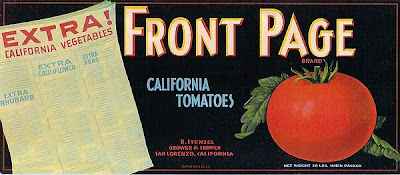 No manufacturing process can be absolutely 100% perfect - so every manufacturing process allows for some degree of variation from specifications. For practical and economic reasons, they all have a certain "tolerance for variation."
No manufacturing process can be absolutely 100% perfect - so every manufacturing process allows for some degree of variation from specifications. For practical and economic reasons, they all have a certain "tolerance for variation."So, what if car manufacturing was toleranced the same way as printing color?
Car salesman to purchaser: "You've made a great choice of car model!
Now, this model does come in a choice of parts manufacturing tolerance. First off we offer "pleasing parts fit." It's our best price/value option - after all who cares about real precision except those calculator obsessed engineers anyway? Forget Delta E - we're talking Delta Wheee! with this baby.
The next level up in fit quality is our popular "memory parts fit" model. This puppy is based on our assembler's memory of how the parts should fit. You can be confident about our memory parts fit option because all of our parts assemblers are memory-tested by the factory certified psychiatrist and must have memorized their multiplication tables up to at least 5 times 5. They also need to repeat from memory, with no outside help or notes, at least one of two telephone numbers.
And finally, we offer our very best parts fit option, the "critical fit." This is for the truly discerning buyer. Perhaps someone like you? For critical fit we use the best instruments available to assure a parts fit that meets, and even exceeds industry standards and specifications. Of course, purchasing this option is a bit more complex than our other parts fit, because we will need to work together to determine whether you would like the instruments to use the 1975, 1998, 2001, Six Degrees of Observer, perceptually measured or absolutely measured parts fit method. But, just between you and me, I have to disclose that our parts assemblers do sometimes ignore any standard reference you might embed in the purchase order. However, I'm sure that, in the unlikely case that you are not satisfied with the fit of all the parts in your car, a small discount in price will be sure to remedy your concerns and gain acceptance of final delivery!
We can assure you that with any option you choose we offer a World Class product that has been extensively tested, accredited and delivered around the globe. If the label on the box has our name, you are guaranteed the same high performance every time. Our competition cannot match us! They have no idea how we do it. And because you are such a nice person, we're going to throw in, absolutely free* an over all gloss finish** that'll really make it shine!***. So let's sit down and figure out just what it's going to take to put you in the presswork driver's seat."































